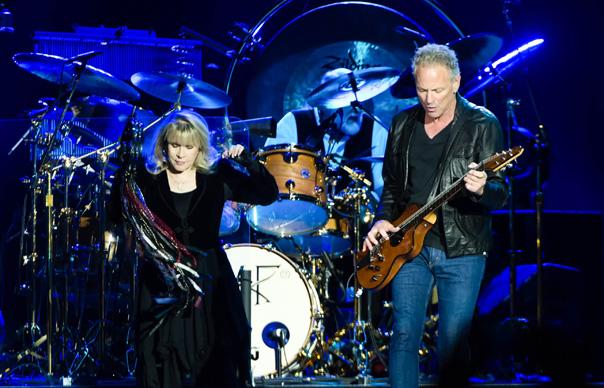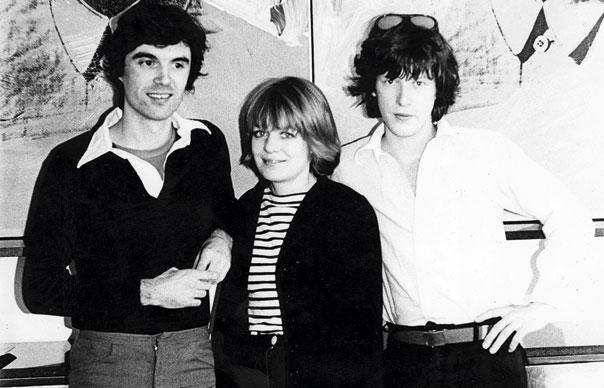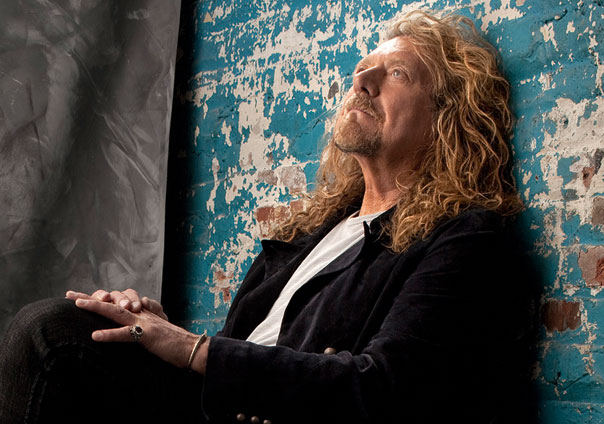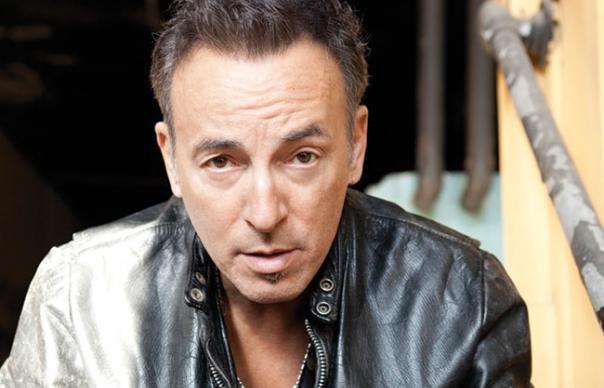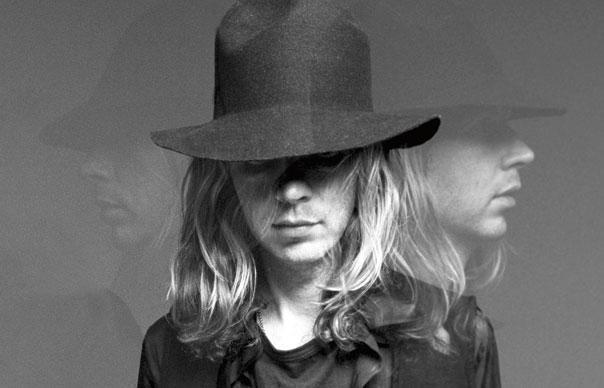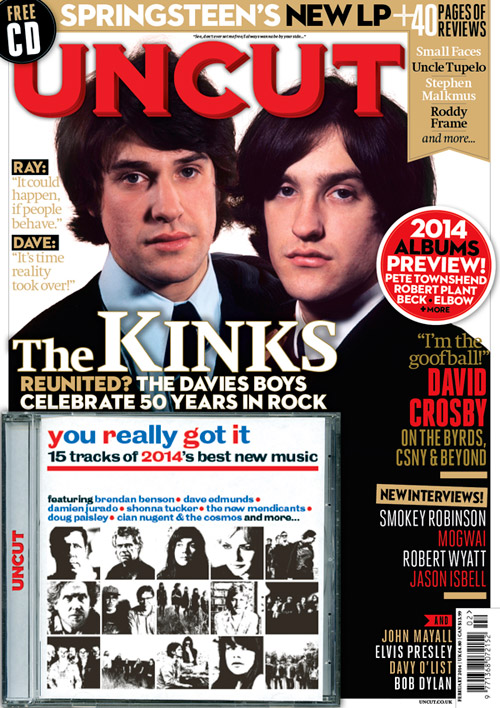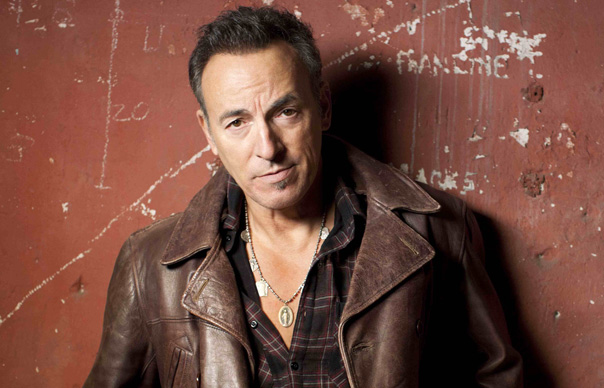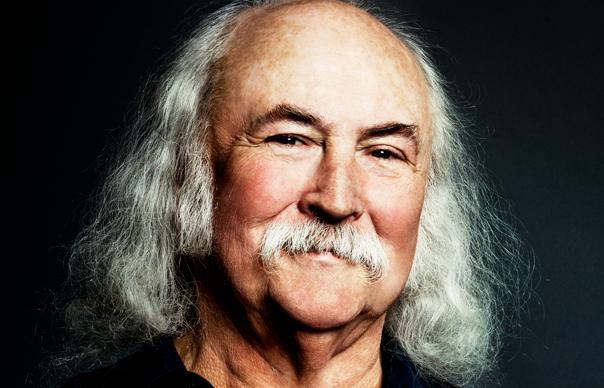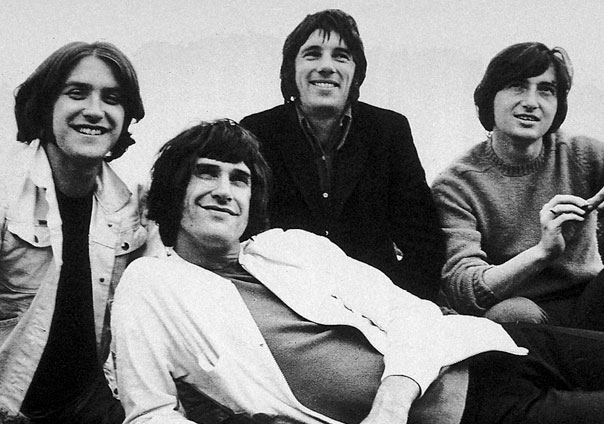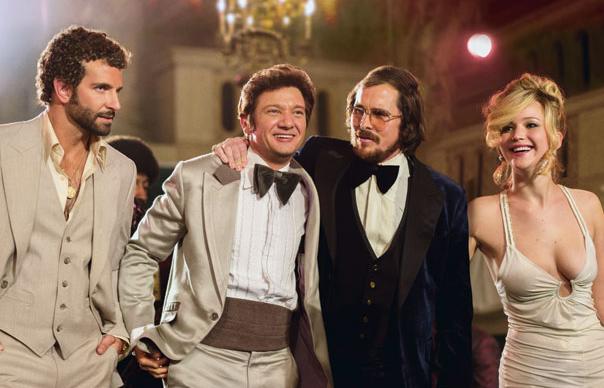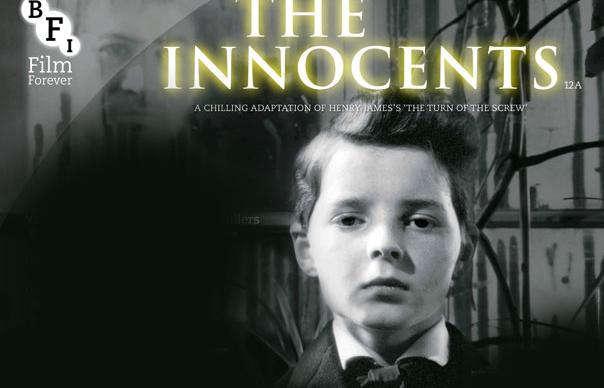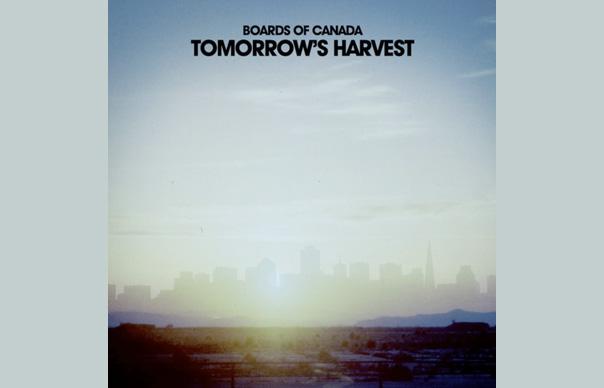Religious dissidents and juvenile delinquents, Greenwich Village and Potsdamer Platz, doomed soldiers and vacuous celebrities… David Cavanagh files the epic, definitive review of The Next Day. From Uncut’s April 2013 (Take 191) issue.
_______________
This is how it ended. The crowd booed and catcalled. Bowie reeled away in pain. When he returned to the microphone, his voice had a bitter rasp. “Yeah, let’s do that again all fuckin’ night! Where are you, creep? Yeah, I guess it’s easier to get lost in the crowd, you bastard.” Reports of the incident swept the internet: a lollipop had been thrown by a fan in an audience in Oslo, hitting Bowie straight in the eye. It rivalled the Lord’s Prayer at Wembley as the most bizarre event of his performing life. A week later, in Prague, Bowie complained of chest pains. A trapped nerve in his shoulder, they said, but within 48 hours he suffered a heart attack at a festival in Germany. It was June 25, 2004. The rest of the tour was cancelled as Bowie underwent emergency surgery on a blocked artery. After the operation came the shutdown, the withdrawal. No albums, no tours, merely rumours of ill health and retirement. Five years became six, and eight became nine, and the world accepted that Bowie’s remarkable career in music was over.
This is how it starts. The crowd are baying for blood. A man is chased through the streets and dragged to a river on the back of a cart. Dead bodies pile up on the shore. There’s a “purple-headed priest” whom everyone is terrified of. Are we listening to the fate of one of the Tudor heretics? Or a dissident of the Catholic Church in John Wycliffe’s time? Perhaps the action takes place in an even earlier century, like the 11th, where the priests, omnipotent and supposedly omniscient, “can’t get enough of that Domesday song”. Bowie comes to a climactic line and lets fly with a roar that almost strips the skin from his mouth: “They know God exists FOR THE DEVIL TOLD THEM SO!”
Drums pound. Guitars slash. Bowie is tortured and left to writhe in a “hollow tree”. Death is approaching, but when? Barely conscious, he watches the shadows lengthen as the day dawns and dims. “And the next day, and the next day, and the next…”
It’s 2013. David Bowie has re-entered the building.
_______________
January 8 was a Tuesday. We awoke to headlines that made us rub our sleepy eyes in disbelief. Bowie had stolen in like a thief in the night, uploading a new single on his 66th birthday (“Where Are We Now?”) and announcing the March release of an album (The Next Day) that had been recorded in conditions of Freemason-esque secrecy. “Where Are We Now?”, an elegy to Berlin and Iggy Pop, was the sound of an ageing Bowie, a frail Bowie scouring his memory for video footage of his past. The song was comparable to two of his finest latter-day ballads, “The Loneliest Guy” and “Thursday’s Child”, but was sadder than either because you could hear that he was struggling to sing. But a magician must perforce deceive in order to lay his trick. “Where Are We Now?” was a classic case of misdirection. Bowie “wanted to sound vulnerable”, revealed co-producer Tony Visconti, his relief exploding like a cork from a bottle now that he was finally free to discuss the project. The Next Day, Visconti stressed, was an album of “blistering rock” and we were unlikely to glean too many clues from the single. But by the simple expedient of identifying a handful of Berlin landmarks, Bowie ensured that the public would be primed to expect melancholia, old haunts, fading memories and bygones. They’d be tantalised by the prospect of this legendarily enigmatic man looking back over his 66 years in a mood of regret (or maybe pride) and phrasing his mortality in verses of honesty and disclosure. The public is about to get the shock of its life.
One of the album’s characters is 22. Another is 17. Another could be as young as 14. Far from concerning itself with Bowie’s demise, two songs openly wish death on others. If Bowie was granting interviews, which he isn’t, there are four songs that he’d be quizzed about by every journalist in every city. One of them is so provocative that when The Next Day goes on sale in Hollywood, A-list celebrities will start texting each other in a panic. Bowie’s singing on the album is magisterial, spanning an actorly range of voices with such consummate ease that other singers will be left wondering how he does it. There are some criticisms, of course; it’s not a flawless masterpiece and it loses its way badly in the middle. But its aggression and intelligence demand our unconditional attention. The lyrics are fascinating. There’s more language to engage with than on any Bowie album, arguably, since Outside – quite an achievement as Outside was virtually a novel. Bowie’s lyrics, in fact, provide the answer to the question Why Has He Come Back? He’s come back, clearly, because he has plenty to say, and new ways of saying it, and couldn’t keep silent any longer.
_______________
A loud discharge from the drums (whoomph!) and we’re in. Harsh guitars dominate the early proceedings. This is the title track and it’s super-intense. This is music that wants to get us in a headlock and throw us around the room. We hear a Public Enemy siren squeal and the first words on a Bowie album in 10 years are: “‘Look into my eyes,’ he tells her/‘I’m going to say goodbye,’ he says, yeah.” Bowie’s punching out the lyrics with the same insistent rhythm that he used in “Repetition” (on Lodger), but much fiercer, emphasising key words with a teeth-bared shout.
He takes us on a tour of the alleys, shows us the disease-ridden townspeople, introduces the “purple-headed priest” and holds us spellbound as the song races headlong towards the gallows.
After that thrilling entrance, “Dirty Boys” is an abrupt detour. It has a wonky rhythm that grinds and grimaces. A frazzled guitar (Earl Slick) makes some splintery “Fashion”-esque outbursts, but the sparse ambience is closer to Iggy Pop’s The Idiot than to Scary Monsters. A baritone saxophone enters with a lurch, almost comically, as though playing along to a film about a man with a pronounced limp. Bowie sings in a peculiarly chewy voice, if you can imagine him sucking a gobstopper while trying to impersonate Edward Fox. “I will buy you feather hat/I will steal a cricket bat/Smash some windows, make a noise/We will run with dirty boys.” They’re a gang. A bunch of violent kids whose “die is cast”, who “have no choice”. There’s something jagged about the language that smacks of A Clockwork Orange, and Bowie’s stylised voice seems like an extra device to validate the hoodlums’ behaviour as literary, rather than mindless, destruction. We leave them to their nightly ritual.
A primary characteristic of The Next Day is the way in which it catapults us from one scenario to another, often across continents and centuries, requiring us to readjust and get our bearings. If the first song was set in the Middle Ages, and the second in some imaginary North London, the third, “The Stars (Are Out Tonight)”, takes us to Hollywood and New York where the parties and premieres are strictly invite-only. It’s sure to be one of the most talked-about songs on the album.
It begins with swishy confidence, busily arranged to bolster a disappointingly plain chord progression. There are three guitars (Bowie, Gerry Leonard, David Torn), a baritone sax and contrabass clarinet (both played by Steve Elson, a veteran of Let’s Dance and Tonight), a recorder (Visconti), a four-piece string section and two female backing singers. A snappy vocal hook is heard from time to time, giving the song a Style Council pop-soul tinge. The lyrics make a few punning connections between stars in the sky and stars in the movies, and then, without warning, Bowie goes on the attack.
Fame, he once commented, puts you there where things are hollow. Many songwriters of his vintage have railed at the ersatz celebrity of reality TV and The X Factor, but Bowie sounds like he’s going after the big guns, not the small fry. “The stars are never far away… They watch us from behind their shades… We see Jack and Brad from behind their tinted windows… The stars are never sleeping… Dead ones and the living.” This is Stepford Wives territory: celebrities with no lights on inside, menacing, robotic, inhuman. Bowie, losing patience with them, portrays them as a shamed, scared tribe huddling together in tight packs, bonded by paranoia, with radiant smiles but vacant eyes, and with – get this – “child wives” in tow. “We will never be rid of these stars, but I hope they live forever,” he concludes with derision.
If it had been written by Brett Anderson, “The Stars (Are Out Tonight)” would have minimal impact. Coming from Bowie, a celebrity at the absolute pinnacle of the pecking order, it’s an extraordinary declaration of contempt for a society of untouchables. Many of them will strain to catch every nuance of “The Stars (Are Out Tonight)” while asking themselves if Bowie – one of their own – has coldly despised them all along.
_______________
The torrent of Bowie headlines on January 8 amounted to a campaign that no advertising company’s budget could have bought. Inevitably, interest in Bowie will have been reawakened right across the age spectrum, including tens of thousands, at a conservative estimate, who haven’t bought a Bowie album in many years. These people will flock to The Next Day and digest it in isolation. For them it will be an album without backstory or context. But it can also be seen – should also be seen – as the third album in a sequence that got under way at the start of the millennium.
Rekindling his relationship with producer Visconti after 20 years, Bowie released two albums – Heathen (2002) and Reality (2003) – that have quietly assumed the grandeur, if not the commercial status, of late-period classics. Though they have their differences, Heathen and Reality share a seriousness, a love of texture and an ambiguity of expression that allows multiple meanings to be read into them. In Heathen’s case, it came to be seen as Bowie’s response to September 11. For Reality, substitute the Iraq War. Bowie has a way of composing lyrics in non-linear fragments, but with manifest emotion within those fragments, so that the finished song seems to apply both to him and to mankind as a whole. He’s anxious. It’s an anxious world. He feels alone. The world is a lonely place.
The Next Day has that geopolitical portentousness that Heathen and Reality had, without specifying nations or leaders. Many of its characters are helpless or hopeless, either out of reach or out of their depth. Something has angered Bowie to the point of slamming down his fist. He’s reminiscent of Peter Finch’s distraught newscaster in Network: “I don’t have to tell you things are bad. Everybody knows things are bad.” Finch ends his broadcast, you’ll remember, by urging Americans to get up from their armchairs, throw open their windows and shout: “I’m as mad as hell and I’m not going to take this anymore!”
So along with the clanging guitars, a grim trepidation courses through The Next Day, like the frozen urban tundra that formed the landscape of Anthony Moore’s brilliant post-punk LP Flying Doesn’t Help. In more chilling moments one can detect the footprints of Scott Walker. It doesn’t have to tell us things are bad. We know things are bad. It cannot be said to have a unity of theme (Bowie may one day inform us to the contrary) and it lacks a unity of genre, but The Next Day can perhaps lay claim to something more intangible: a unity of climate. As much as it’s all-new and shiny, it does sound like Heathen and Reality’s natural successor.
_______________
We resume. Track four: “Love Is Lost”. Bowie holds his hands down on a keyboard, producing dramatic chords. Zachary Alford (who played drums on Earthling) inserts an idiomatic “Ashes To Ashes” catch in the beat. Gerry Leonard’s bluesy guitar fills have a touch of Stevie Ray Vaughan on Let’s Dance. A glam-rock refrain (“say hello, hello”) takes us even further back.
“Love Is Lost” is about an emotionally disturbed 22-year-old woman. She’s alone and awake in “the hour of dread”, “the darkest hour”. It crosses the mind for an instant that Bowie might have devised a character through which to explore some dread of his own (is this going to be a song about dying?), but the lyrics become brutal and personalised as he adds more detail. “Your country’s new, your friends are new/Your house and even your eyes are new/Your maid is new, and your accent too/But your fear is as old as the world.” Another radiant starlet whose smile masks a secret despair? Whoever she is, her mind is disintegrating as she stares at her superficial construct, her plastic lie. Bowie ends the song with anguished cries of “Oh, what have you done?”
The single, “Where Are We Now?”, arrives next, all Potsdamer Platz and elegance, decelerating the album’s heartbeat and slowing its blood to a trickle. The Next Day has become a sombre study of unhappy people depleted of energy. The teenage boy in “Valentine’s Day” is not unhappy, but he’s deeply troubled. He has fantasies about ruling humanity with a jackboot.
He has an “icy heart”. He looks harmless with his “tiny face” and “scrawny hands”, but we do fear the worst. The musical references are to the past: a Ziggy-style vocal and a whiff of Lou Reed’s “Satellite Of Love” (from Transformer), which Bowie co-produced. But Valentine doesn’t live in London in 1972. More like Colorado or Ohio right now. Something’s about to happen. Valentine is poised to act. The song has unspoken premonitions of a Columbine massacre.
Bowie and Gail Ann Dorsey duet on “If You Can See Me”, a bewildering piledriver of a track. Counting the beat is impossible in its outlandish time signature. Performed and sung at the edge of hysteria, it’s as frantic as the industrial cacophonies on Earthling, with some voice gimmickry that speeds Bowie up to gnome-like pitch. “If You Can See Me” is an experiment in pushing everything, including us, to the limit. The verses are couched in abstracts. Blue shoes. A red dress. A ladder. A crossroads. “Meet me across the river.” Children swarm like “thousands of bugs” towards a beacon on a hill. In one of the album’s most exquisite passages, Bowie lowers his voice to a lordly baritone and croons: “Now, you could say I’ve got a gift of sorts/Veneer of rear windows and swinging doors/A love of violence, a dread of sighs.” But children don’t swarm of their own volition. The beacon on the hill is anything but a place of safety. When the lordly voice reappears, there’s an unstable edge to it, the shrillness of megalomania. The character is unmistakably a monster. “I will take your lands and all that lays beneath… I will slaughter your kinds who descend from belief… I am the spirit of greed.”
A medieval despot? Or did Bowie have someone more modern in mind? And is everyone on The Next Day going to turn out to be violent and insane?
_______________
For reasons best known to Bowie, the album has a tendency towards bland songtitles that reveal nothing of the turbulent worlds inside. “I’d Rather Be High” is about a 17-year-old soldier flown to Cairo to join his regiment. They have received orders from “generals full of shit”. The soldier has sympathy for his enemy (“I’d rather be dead, or out of my head, than training these guns on those men in the sand”). He worries about going crazy and dreams of home. “I’d rather smoke and phone my ex/Be pleading for some teenage sex.” Zachary Alford adds to the authenticity by thrapping out a military drum pattern behind Gerry Leonard’s guitar, but “I’d Rather Be High” could do with some of the melodic unpredictability of “Never Get Old” (from Reality), which it faintly resembles. As it is, there’s no transcendence, no lift-off. “I’d Rather Be High” grumbles about generals, shoots and leaves.
“Boss Of Me”, co-written by Bowie and Leonard, is a feisty mid-tempo track like “Dirty Boys” with more of the colours filled in. Again, Steve Elson’s baritone sax is prominent and the backing vocalists return. All the same, it’s one of the least interesting songs on the album, with some crude changes as if ill-fitting pieces of unrelated songs had been clomped together as a compromise. There’s also a naggingly subliminal association with Peter Gabriel’s “Sledgehammer”, which it could’ve done without. The charmless punchline (“Who’d have thought a smalltown girl like you would be the boss of me?”) might have graced a Mick Jagger solo album, if it were lucky, but is an incongruous piece of misogyny here. “Dancing Out In Space”, which follows, is equally inconsequential.
A bouncy pop tune that revives the classic Supremes beat (“You Can’t Hurry Love”) which inspired Bowie and Iggy’s “Lust For Life”, “Dancing Out In Space” has twinkle-star keyboards and wears a mid-’80s party frock. It’s conceivable that it wants to be “Let’s Go Crazy” by Prince – when it grows up, anyway – but the lyrics are trite and it’s hard to care about a sugar-candy throwaway after the action-packed 25 minutes before it. Who puts a trailer in the middle of a film? Getting The Next Day’s psychological measure is tricky enough without being waylaid by a song whose chorus sounds like Darts singing about the boy from New York City.
The album is slipping away. But before we know it, we’re back in wartime. “How Does The Grass Grow?” fades in like Robert Fripp’s looped army of guitars on Fripp & Eno’s No Pussyfooting, a nice illusion since Fripp doesn’t actually play on the album. A soldier is writing a letter to his sweetheart back home. He urges her to go to a graveyard near some steps (“That’s where we made our tryst”), a line that recalls Wilfred Owen. We remember from our Bowie biographies that a grandfather, Jimmy Burns, fought in the First World War. “The 3rd Hussars were sent to France and a week later rode into the battle at Mons,” Peter and Leni Gillman write in Alias David Bowie. By winter 1914, the Hussars were “stricken with frostbite, the horses up to their hocks in mud”. Sure enough, the song’s chorus goes: “Where do the boys lie?/Mud, mud, mud!/How does the grass grow?/Blood, blood, blood.”
A metallic riposte after the Motown interlude, “How Does The Grass Grow?” has a compassionate anti-war message, but is undermined by a curious Bowie-Dorsey vocal part that imitates the twangy melody of The Shadows’ “Apache”. Bowie may have been seeking a Joe Meek-ian otherworldliness, and so used a tune from 1960, but the “Apache” motif takes only two listens to become irritating. Three and it becomes a serious issue. Much more appealing is a transition midway through in which the musicians relax and Bowie sings romantically in a “Wild Is The Wind” style.
The next track is the heaviest on the album. “(You Will) Set The World On Fire” stomps in with a staccato riff like early Van Halen or Rainbow’s “Since You Been Gone”. It features a strikingly eccentric Bowie vocal – think of a barmy aristocrat whom the family keeps locked in the attic – which instantly puts us in mind of “Look Back In Anger” (Lodger).
But we need to go back as far as Hunky Dory, and a strange young man with a voice like sand and glue, to pinpoint the location of “(You Will) Set The World On Fire”. It’s midnight in the Village – Greenwich Village in the early ’60s. Candles are lit in a nightclub. There are hints of furtiveness and concealment. “You say too much”. Kennedy is mentioned, and Dave Van Ronk and Bobby (Zimmerman) and there’s a “Joan” whose surname may be Baez. A young singer is hoping to break out of the Village and make her name. The pummelling chorus taunts and sneers about “magazines”. Earl Slick pulls off a bravura solo. “Be who God meant you to be and you will set the world on fire,” said St Catherine of Siena (1347-80).
The penultimate track, “You Feel So Lonely You Could Die”, is a ballad with a string arrangement that brings vivid flashbacks of the Ziggy era. “Rock ’N’ Roll Suicide” looms unmistakably into view, as does Lou Reed’s “Perfect Day”. A piano is tinkled sweetly as two lovers stroll through a park. Then the lyrics get a little bit nasty. Then they get very nasty indeed. “I’m going to tell the things you’ve done.” The lovers have separated, and now one of them is hellbent on exposure, incrimination, the apportioning of blame. Bowie launches into a devastating indictment of a person he once loved, singing like a wondrous union of himself, Piaf and Morrissey. The song will have everyone speculating. Is he writing in character? Or is the target real? Bowie sounds consumed with pain. “I want to see you clearly before you close the door/A room of bloody history/You made sure of that.” He twists the knife. “I can see you as a corpse… I can read you like a book!” And now the sexual jealousy: “I can feel you falling/I hear you moaning in your room/Oh, see if I care! Oh, please, please, make it soon!” It’s mighty, mighty stuff. When it’s over, you want to rise to your feet, cry ‘bravo!’ and fling bouquets at the stage.
Nightmares pervade the final track, “Heat”. A sinister synthesiser buzzes in a low drone. A bass guitar snarls like a guard dog. Someone is having upsetting visions. A dead dog trapped between the rocks. The water can’t flow because the dog is wedged tight. “My father ran the prison/ I can only love you by hating him more/That’s not the truth/It’s too big a word.” Bowie is muscling in on Scott Walker’s terrain here – both vocally and lyrically – and when the eerie violins start to screech, “Heat” can no longer hide its palpable debt to Walker’s “The Electrician” (1978), a song that Bowie has long admired. Walker was writing about the horrors of electric shock torture in a South American police station. Bowie’s homage, sadly, is too woolly to be convincing. It’s a deflating sensation to see him end The Next Day with a song so brazenly in thrall to a better one.
Visconti has claimed that 29 tracks were recorded, which augurs well for another album in due course. Three bonus cuts from the sessions are included on The Next Day’s deluxe edition. They’re worth hearing. “So She” is a charming frolic through a Serge Gainsbourg ’60s pop paintbox, with lush strings and a glockenspiel melody that Stereolab would be delighted with. “Plan” is a short, unfriendly instrumental. “I’ll Take You There”, the best of the bonuses, is a driving rocker loaded with hooks and a terrifically catchy chorus (“What will be my name in the USA?/Who will I become in the USA?”). Hypothetically, it would have maximum singalong interactive potential for a suitably pumped-up audience. Realistically, nobody knows if Bowie’s going to perform live again.
So it didn’t turn out to be an album of ruminations, reveries and ghosts. The theories about The Next Day’s title invoking Beckett and Macbeth proved unfounded. The passing of the days – endless days, blank days – has always been present in Bowie’s work, from “All The Madmen” to “Buddha Of Suburbia”, and it remains so. The days can look after themselves. The characters that we are, however, seem to be gaining frightening momentum as we hurtle towards the collisions that await us. Bowie has given us that much to ponder, and more besides, as he withdraws once again.
Photo: Jimmy King



